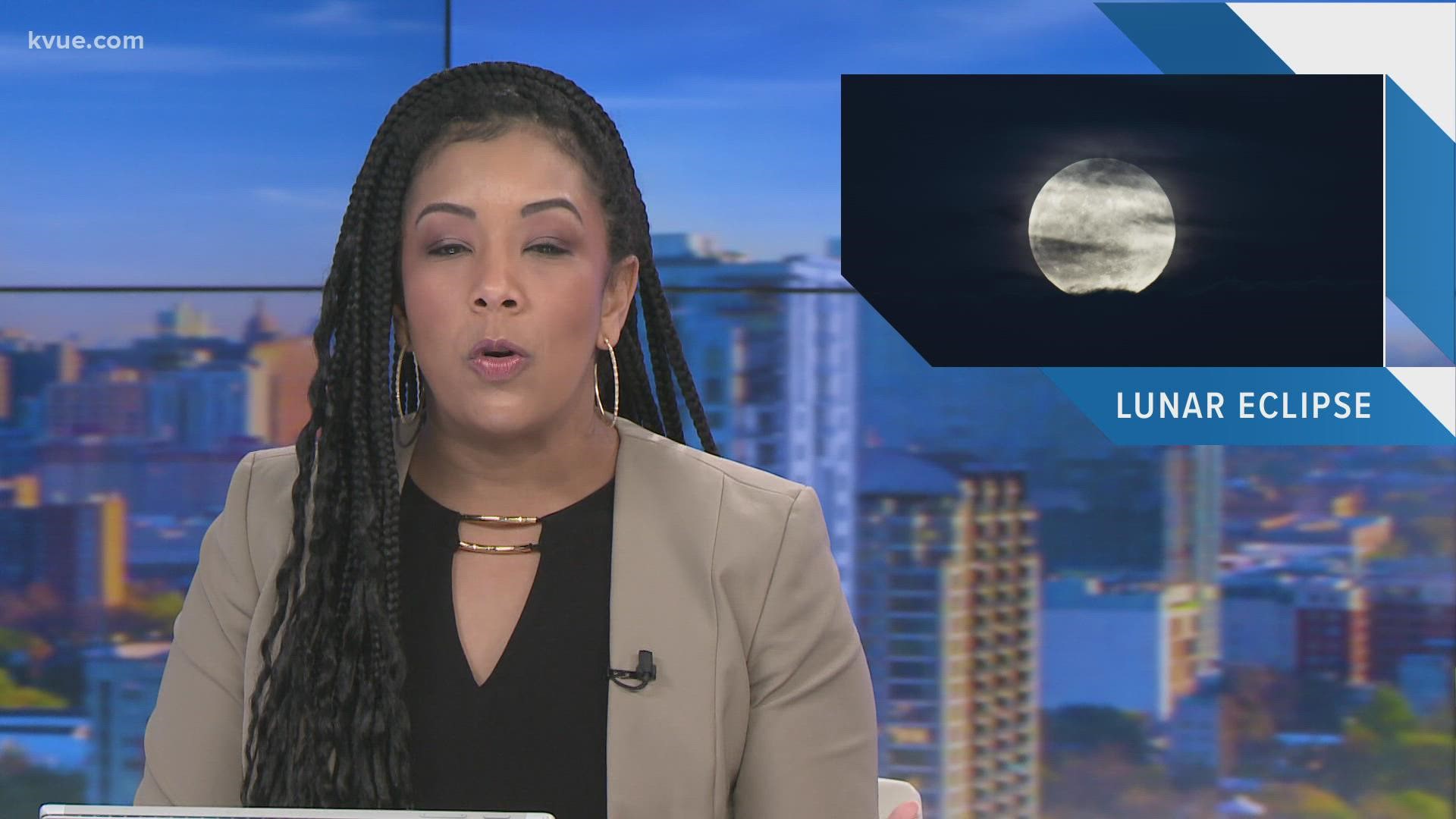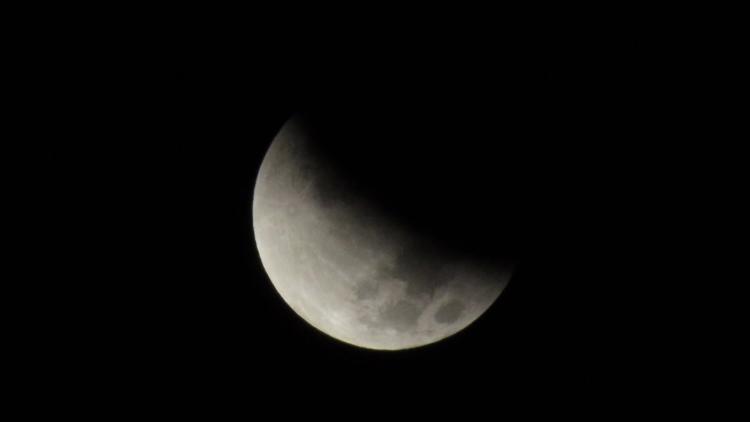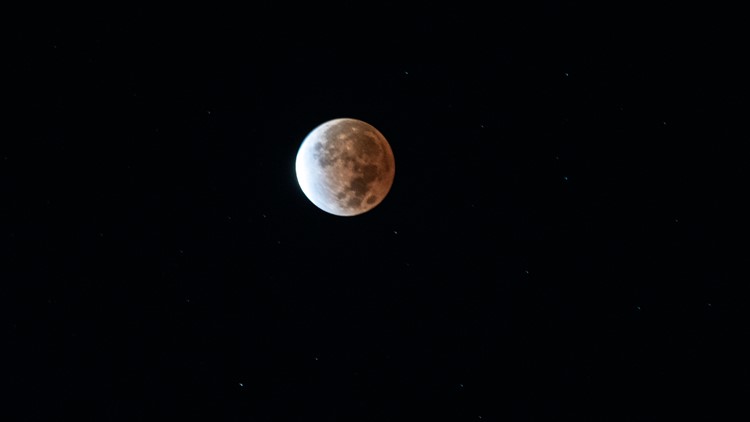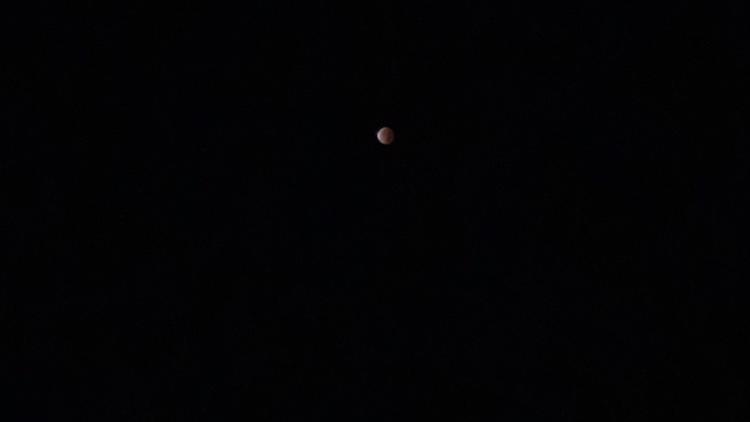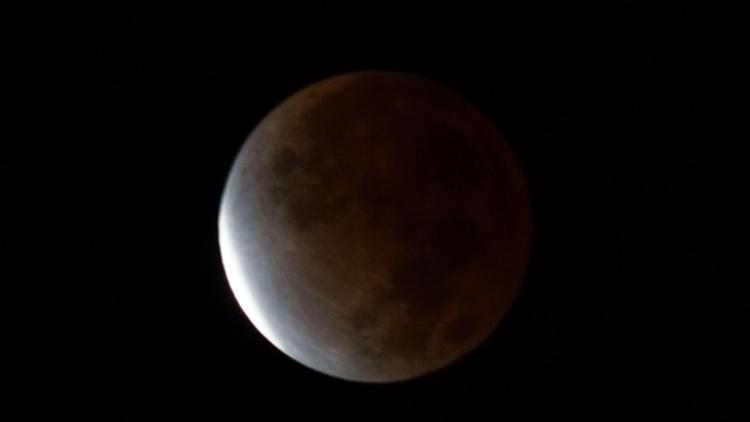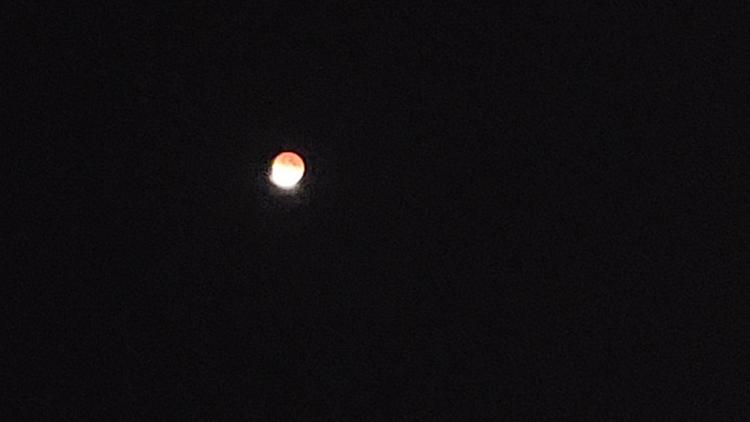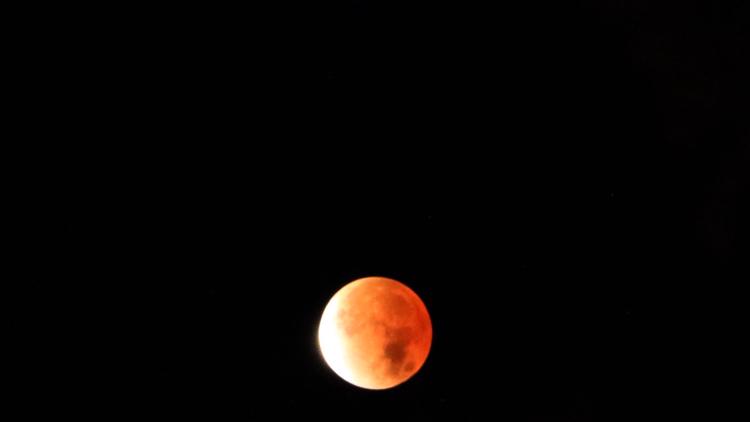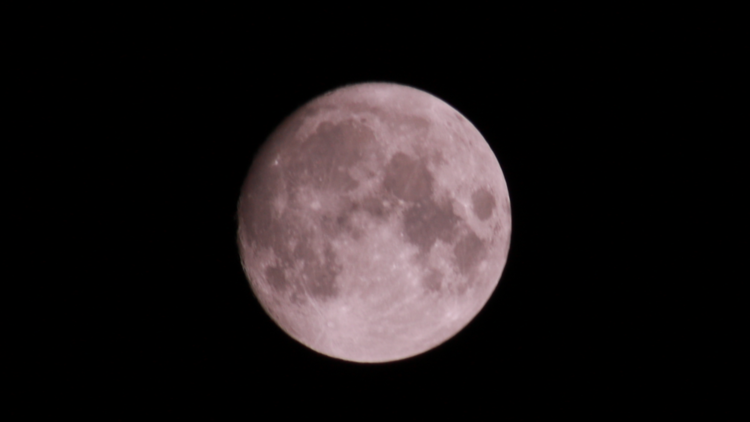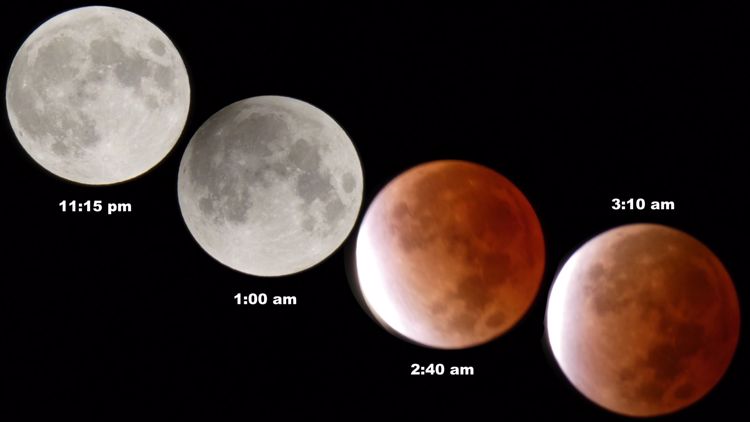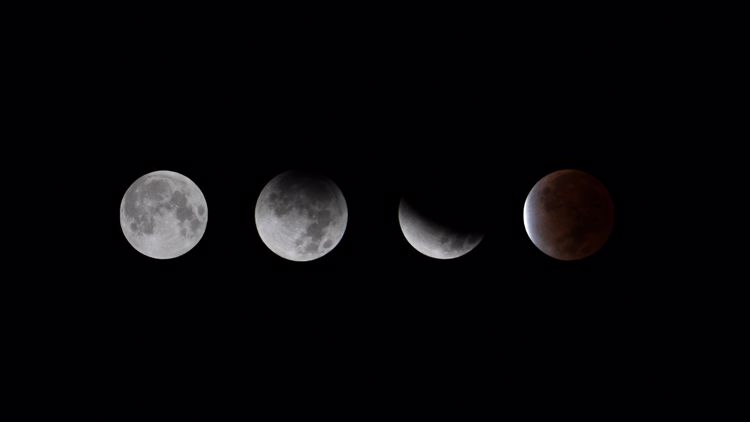AUSTIN, Texas — A partial lunar eclipse was in the forecast early Friday morning for all of North America, including right here in Austin. This particular partial lunar eclipse event was special because it was the longest this century.
A lunar eclipse occurs when Earth passes between the moon and the sun, casting Earth's shadow on the moon for a short period of time. It is important to note that there is a difference between a full and partial lunar eclipse. What makes Thursday night's lunar eclipse partial was that only part of the moon slipped into Earth's shadow. Whereas a full lunar eclipse occurs when the entire moon is within Earth's shadow.
With this particular partial eclipse, around 97% of the moon was within Earth's shadow, so most of the moon appeared dimmed while a small sliver of the moon appeared as normal. It was also a little red in color.
Luckily, for all you stargazers, it was safe to view a lunar eclipse with no eye protection and you didn't even need a telescope to view the eclipse. Here's a look at what you all saw.
PHOTOS: Partial lunar eclipse - November 2021
Share your pictures by uploading directly to the KVUE app: kvue.com/app.
Fortunately, Mother Nature was on our side with mostly clear skies. Get your hourly forecast here.
Thursday night's partial lunar eclipse lasted for 6 hours and 2 minutes in Austin, making it the longest lunar eclipse in almost 600 years.
The partial lunar eclipse began at 12:02 a.m. Friday morning and ended at 6:03 a.m. Friday. The maximum lunar eclipse, also known as the best time to view the lunar eclipse, was at 3:02 a.m.
PEOPLE ARE ALSO READING:

